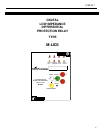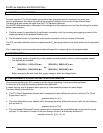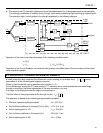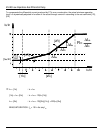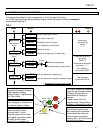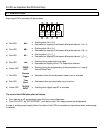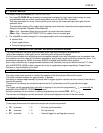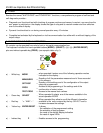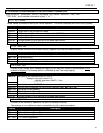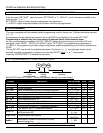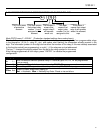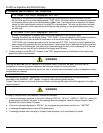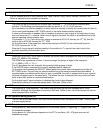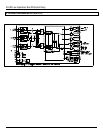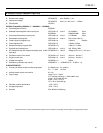
S150-34-1
33
6.18 CLOCK AND CALENDAR
The unit features a built in clock calendar with Years, Months, Days, Hours, Minutes, Seconds, and
Tenths of seconds and Hundredths of seconds.
6.18.1 Clock synchronization.
The clock can be synchronized via a digital input (terminals 1 – 14) or the serial communication
interface. The following synchronization periods can be set: 5, 10, 15, 30, 60 minutes.
Synchronization can also be disabled, in which case the only way to modify the current date and time is
via the front panel keyboard (SETTINGS menu) or the serial communication interface.
In case synchronization is enabled, the unit expects to receive a sync signal at the beginning of every
hour and once every T
syn
minutes. When a sync signal is received, the clock is automatically set to the
nearest expected synchronization time.
For example: if T
syn
is 10min and a sync signal is received at 20:03:10 January the 10
th
, 98, then the
clock is set to 20:00:00 January the 10
th
, 1998.
On the other hand, if the same sync signal were received at 20:06:34, the clock would be set to
20:10:00, January the 10
th
98.
Note that if a sync signal is received exactly in the middle of a T
syn
period, the clock is set to the
previous expected synchronization time.
6.18.2 Date and time setting.
When the PROG/SETTINGS menu is entered, the current date is displayed with one of the groups of
digits (YY, MMM or DD) blinking.
The DOWN key operates as a cursor. It moves through the groups of digits in the sequence
YY => MMM => DD => YY => …
The UP key allows the user to modify the currently blinking group of digits.
If the ENTER button is pressed the currently displayed date is captured.
On the other hand pressing the SELECT button leaves the current date unchanged and scrolls the
SETTINGS menu. Current time can now be modified using the same procedure described above. If
synchronization is enabled and the date (or time) is modified, the clock is stopped until a sync signal is
received (via digital input or the serial port). This allows the user to manually set many units and have
them to start their clocks in a synchronized fashion.
On the other hand if synchronization is disabled the clock is never stopped.
Note that the setting of a new time always clears 10ths and 100ths of sec.
6.18.3 Time resolution.
The clock has a 10ms resolution. This means that any event can be time-stamped with a 10ms
resolution, although the information concerning 10ths and 100ths of sec. can be accessed only via the
serial communication interface.
6.18.4 Operation during power off.
The unit has an on board Real Time Clock which maintains time information for at least 1 hour in case
of power supply failure.
6.18.5 Time tolerance.
During power on, time tolerance depends on the on board crystal (+/-50ppm typ, +/-100ppm max. over
full temperature range).
During power off, time tolerance depends on the RTC’s oscillator (+65 –270 ppm max over full
temperature range).



